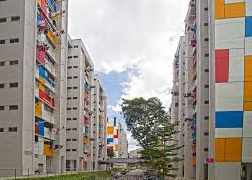Exploring cultural attitudes towards child autonomy in Singapore.
A few months ago, Netflix aired Old Enough!, a heartwarming Japanese series that sparked varying reactions around the globe. This unscripted reality show features young toddlers completing errands unsupervised in Japanese neighborhoods, eliciting both admiration and criticism.
In Singapore, Mediacorp Channel 5 adapted Old Enough! in 2019, showcasing celebrity children running errands on their own, which similarly met with mixed responses from local parents. Geraldine Tan-Wee, a Facebook user, articulated a common concern: “If it were this safe, schools wouldn’t need IDs to pick kids up or to enter the school.”
This highlights a fair point regarding the culture of child independence in Singapore. Shaina Yu, co-founder of Brave Feats Student Care, noted that even though most kids at her center are close enough to walk home, less than 5% do so independently. “Most parents still prefer to pick them up, especially if the child is 7 to 8 years old,” she explained, emphasizing that only children aged 9 and older are occasionally allowed to walk home alone.
It’s worth mentioning that the carefree toddlers in Old Enough! navigate routes that have been vetted for safety, with residents informed of filming and crew members stationed along the way. This raises the question of why Japan has cultivated a stronger culture of child independence compared to Singapore.
Designing a Child-Friendly City
Creating a city that is both child-friendly and walkable goes beyond mere design; it is also shaped by cultural attitudes that prioritize community and safety. Mr. and Mrs. Oba, a couple from Kyoto now living in Singapore, recognize the importance of urban design in fostering walkability. They appreciate Singapore’s wide pavements and efficient public transport but note that accessibility for strollers and wheelchairs could be improved.
Despite Singapore’s growing reputation for being walkable, some areas still feel designed for cars rather than pedestrians. TikTok user @larabellamyers, who has lived in various countries, commented on Singapore’s multi-lane roads, contrasting them with the walkable streets common in Europe.
Lily, a Singaporean working mother living in London, noted that while Singapore’s infrastructure is impressive, the weather can deter long walks. However, she believes the low crime rates and child-friendly environment in Singapore create a level of community-centeredness that could allow for greater independence—if the culture supported it.
Are Singaporean Parents Too Protective?
If Singapore is relatively safe and walkable, the lack of a culture promoting child independence raises questions about the reasons behind this hesitance. The infamous Toa Payoh child murders in the ’80s led to widespread concern regarding child safety and changed parental practices, causing many parents to accompany their children to school—a trend that persists today.
The Obas suggest that Singapore could learn from Japan’s “Shudan-Toko” system, where groups of children walk to school together under the watchful eye of local volunteers. This approach not only provides safety but fosters community bonds.
How Can We Foster Independence?
To cultivate a more child-friendly environment in Singapore, community spirit and cultural attitudes must evolve alongside infrastructure improvements. Shaina emphasizes the importance of teaching children about potential dangers and preparing them for independent tasks.
She poses a thought-provoking question to Singaporean parents: “What fears are you willing to let go of, and what extra efforts are you prepared to make to help your children succeed?”
Ultimately, fostering child independence requires both systemic changes and cultural shifts. Reflecting on these issues may be essential for nurturing confident, self-reliant children who can thrive in an ever-evolving society.








